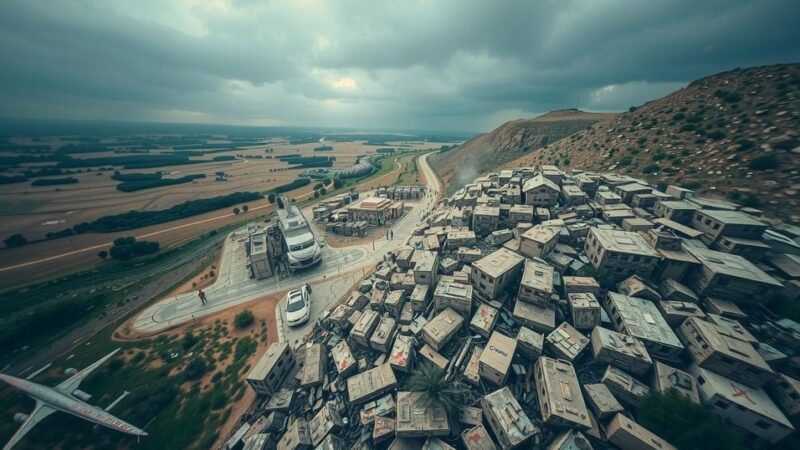The Democratic Republic of Congo has signed an MoU with Monacosat to deploy a satellite telecommunications network aimed at enhancing connectivity in rural areas. The initiative is part of the Horizon 2025 Digital Plan, addressing the significant digital divide as only 30.79% of citizens have mobile internet access. If successful, this partnership may connect millions, improving access to education and healthcare while tackling gaps in fibre optic coverage.
The Democratic Republic of Congo (DRC) has formally entered into a Memorandum of Understanding (MoU) with Monacosat, the premier satellite operator from Monaco. This strategic partnership aims to finalize the deployment of a robust satellite telecommunications network throughout the DRC, leveraging Monacosat’s advanced satellite capacity. This collaboration is anticipated to significantly improve connectivity in rural and underserved areas, thus addressing the prevailing digital divide within the nation. The Ministry of Information and Communications Technology (ICT) of the DRC has emphasized the initiative’s importance in enhancing overall connectivity. The MoU indicates a commitment to work collaboratively on issues of shared interest, particularly in establishing a satellite telecommunications framework via Monacosat’s satellite resources. Positioned as a fundamental element of the DRC’s Horizon 2025 National Digital Plan, this initiative seeks to create a sustainable digital infrastructure and promote connectivity across the nation. This partnership follows recent efforts in collaboration with the Polish government aimed at advancing the digital networks within the country. Despite the government’s strategic initiatives, connectivity remains a critical challenge, as revealed by recent statistics from the Congo Post and Telecommunications Regulatory Authority (ARPTC). As of June 30, 2023, only 30.79% of the Congolese population had access to mobile internet, with a mere 0.0174% utilizing fixed broadband. Furthermore, the United Nations’ E-Government Survey 2024 signaled a stark infrastructural deficit, noting that the DRC possesses a telecom development index of 0.1591, significantly trailing behind the African average of 0.4534. Should negotiations progress favorably, Monacosat is poised to enhance its coverage across the DRC utilizing the TurkmenAlem52E/MonacoSAT satellite, which is already operational in Africa. This initiative holds the promise of connecting millions of Congolese citizens, thus improving access to essential services such as education, healthcare, and digital public services, while mitigating delays attributed to the expansion of fibre optic networks that require an additional 50,000 kilometers of infrastructure.
The Democratic Republic of Congo is undertaking significant measures to enhance its digital infrastructure amid ongoing challenges related to internet connectivity. The partnership with Monacosat represents a strategic effort to utilize satellite technology as a solution to the country’s digital shortcomings, especially in rural regions where traditional internet services are limited or non-existent. The Horizon 2025 National Digital Plan sets forth ambitious objectives aimed at transforming the DRC into a digitally connected nation, particularly against the backdrop of low connectivity statistics and a lagging telecommunications development index. In a globally interconnected era, improving digital access is pivotal for fostering economic development and social inclusion within the DRC.
In conclusion, the Democratic Republic of Congo’s partnership with Monacosat stands as a pivotal development in efforts to bolster satellite connectivity and address the digital divide across the nation. As outlined in the national Horizon 2025 Digital Plan, this initiative not only seeks to enhance telecommunications coverage in rural areas but also aims to improve access to crucial services such as education and healthcare. Moving forward, the successful implementation of this strategy could significantly change the landscape of digital accessibility in the DRC, aligning it closer to regional and global connectivity standards.
Original Source: broadcastmediaafrica.com



